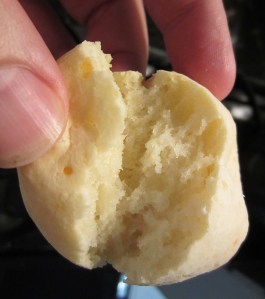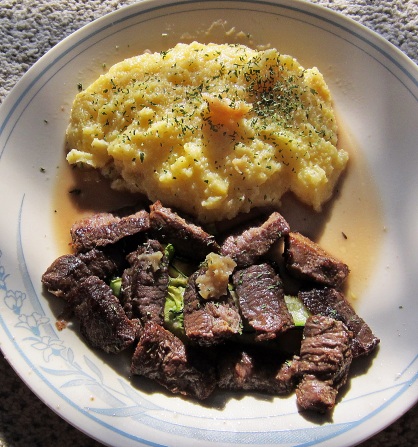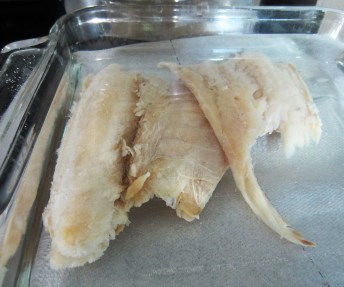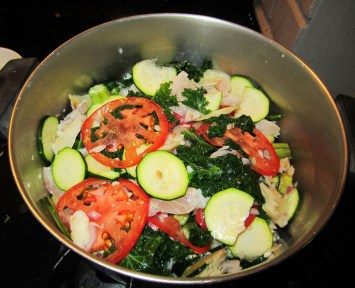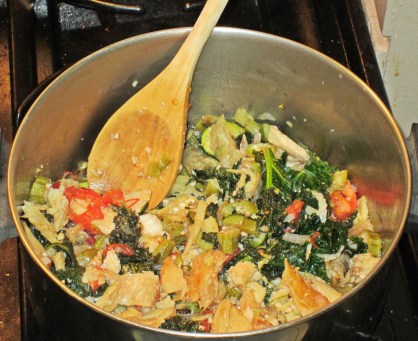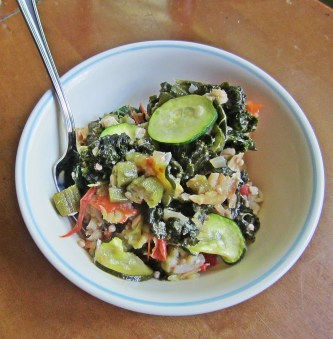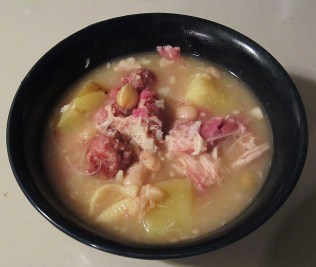Argentine Cuisine…Food Rhyme Time
August 29, 2014

image courtesy of http://www.flags.net
Argentina still has real legit cowboys. They are called Gauchos and they live in the Pampas or Patagonian grasslands. This is a good sign, because where there are cowboys…there are cows. Argentinians love beef, I mean who doesn’t, but they REALLY love beef. So it was a given that I should choose a dish with the starting role going to el carne.
The traditional technique would simply have been to grill or roast the meat over a flame, which frankly sounds wonderful. But that is really the only thing people know about Brazilian and Argentine food so I looked for something a little more unique. Empanadas may not seem to be at first, but each region and peoples have their own filling combinations. The name means simply “breaded” but the magic lies inside the beautifully golden shell. One such mélange from the silver state includes paprika and hard boiled egg. This was certainly a flavor combination that I’ve never encountered but worked so well.
My first time working with puff pastry was…a mixed bag. From years of watching cooking shows I knew it was not going to be easy to manipulate and it was not. Practice helped me improve and the second batch I baked came out much better. Even so, the recipe made a huge amount of filling and even if I had done the pastry part flawlessly, I can’t imagine all would have been used. That being said, it makes excellent leftover filler for tacos, burritos, or simply to mix with rice or pasta.
To go with the empanadas, I made a quick bread recipe for indigenous cheese rolls called “chipás”. These buns are distinctive because they made with tapioca flour from the cassava plant. This flour has a very fine texture and the resulting roll has almost a velvety nap to it. They are soft and chewy on the inside and took no time to make and bake.
Oh yea, it is also the closest country in the world to Antarctica. Next stop, Armenia.
Argentine Meat Empanadas
Serves: 4
1/2 cup shortening
2 onions, chopped
1 pound lean ground beef
3 teaspoons Hungarian paprika (sweet if possible)
1/2 teaspoon crushed red pepper flakes
1 teaspoon ground cumin
1 tablespoon distilled white vinegar
1/4 cup raisins (optional)
1/2 cup pitted green olives, chopped (optional)
2 hard-cooked eggs, chopped
salt to taste
1 (17.5 ounce) package frozen puff pastry sheets, thawed
————————————————————-
Directions:
- In a saute; pan melt the shortening and add the chopped onions. Cook the onions until just before they begin to turn golden. Remove from the heat and stir in the sweet paprika, hot paprika, crushed red pepper flakes and salt to taste.
- Spread the meat on a sieve and pour boiling water on it for partial cooking. Allow meat to cool. Place meat in a dish add salt to taste, cumin and vinegar. Mix and add the meat to the onion mixture. Mix well and place on a flat to dish to cool and harden.
- Cut puff pastry dough into 10 round shells. Place a spoonful of the meat mixture on each round; add some of the raisins, olives and hard boiled egg. Avoid reaching the edges of the pastry with the filling because its oiliness will prevent good sealing. Slightly wet the edge of the pastry, fold in two and stick edges together. The shape should resemble that of a half-moon. You should have a 2/3 to 1/2 inch flat edge of pastry to work with. Seal by twisting edge, step by step, between thumb and index finger, making sure to add pressure before releasing the pinch and moving on to the next curl. Other sealing procedures like pinching without curling or using a fork to seal will not prevent juice leaks during baking, and empanadas must be juicy.
- Preheat oven to 350 degrees F (180 degrees C). Place empanadas on a parchment paper lined baking sheet. Be sure to prick each empanada with a fork near the curl to allow steam to escape during baking. Glaze with egg for shine and bake until golden, about 20 to 30 minutes.
_________________________________________________________________________
Chipas:
1 egg
2/3 cup milk
6 ounces shredded Italian cheese blend
3 tablespoons butter, melted
1 3/4 cups tapioca starch
1 cup self-rising flour (super easy to make your own, google it)
- Preheat oven to 350 degrees F (175 degrees C). Oil a baking sheet with cooking spray and set aside.
- Stir together egg, milk, cheese, and butter in a large bowl. Sprinkle in tapioca starch and flour; stir in to form a dough. Knead dough for two minutes on a lightly floured surface, then roll into golf ball-sized pieces, and place onto prepared baking sheet.
- Bake in preheated oven until golden brown, 10 to 15 minutes.
No, Angola is not a kind of rabbit…
August 16, 2014

image courtesy of http://www.flags.net
I pride myself on knowing at least a little about pretty much any topic. I love pub trivia, Jeopardy, and any other competition that tests the knowledge of obscure information. So in all my years of learning and acquiring strange facts, historical data, and geographical layouts, I can safely say I am woefully ignorant about Africa. It is the last category I would like to see come up in a trivia game. I would rather be faced with other topics I am shamefully under-prepared for such as: Opera, Country Music, Asian Languages, or Romance Literature (both the era and the genre). The point is, I am ashamed of this fact and hopefully through this undertaking I can fill in some of those gaps and strengthen my understanding of the continent, which is second in both population and area.
We’ve already seen Algeria with its Berber and French influences, so now let’s take a look at Angola which (I had no idea) was a Portuguese colony until 1975. Following their independence they promptly entered a civil war which lasted 26 years until 2002. As with many African nations, violence has permeated their history often due to historical European interference. I’m sure that won’t be the last time it comes up in this blog and it’s the unfortunate past of the “dark continent”.
What? You want a non-depressing fact about Angola? Ok…umm…well…the Cabinda Province is separated from the rest of the country by a strip of the Democratic Republic of Congo. That’s pretty interesting I think, right? There are actually very few of those situations in the world, so yes it counts as interesting. Alright I’ll move on to the food.
I made Fish Calulu which is clearly the most fun dish to say of those I have made so far. The origin of the name is debated but possibly comes from “caruru” which may refer to certain types of leafy plants. The dish features okra heavily, a popular vegetable largely known throughout the southern United States, many African slaves brought it with them to the new world. Being a coastal country it makes sense that fish would also play a large role in Angolan cuisine. This was my first time cooking with salted (dried) fish and it may have been the only part I didn’t entirely care for. I followed the instructions for how to rehydrate it but it was still very salty and very, very chewy. Perhaps next time I would increase the soak time and change out the water frequently.
Other than that I was surprised by this dish. The kale was delicious with the fish flavor absorbed and the okra (which is used as a thickener) delivered the texture needed for a coating sauce. I used tilapia as the fresh fish and it had great flavor and texture. This is a nice light summery dish that would probably taste even better if eaten while on a beach somewhere with the sea air in your nose and a breeze in your hair.
Speaking of the beach and the sea, next stop, Antigua and Barbuda…
Fish Calulu
Serves: 4
8 oz dried, salted, fish (ie., salt cod)
8 oz fresh fish, cut into steaks
1/2 onion, finely sliced
1 large, ripe, tomatoes, chopped
4 oz okra, trimmed and sliced
8 oz kale leaves (blanched)
1 garlic cloves
1/4 tsp sea salt
1 Tbsp Lemon Juice
1/3 cup oil of your choice
1/2 zucchini, sliced
————————————————————-
Directions:
Add the dried fish to a bowl, cover with boiling water and set aside for 20 minutes. After this time drain the fish and pour more hot water to cover then set aside for 1 hour.
Meanwhile, add the fresh fish to a bowl and season with the garlic, salt and lemon juice. Set aside to marinate for 20 minutes.
In a large pot, alternate layers of dried fish, fresh fish, sliced onion, sliced zucchini, kale leaves and sliced okra. Combine the oil with any remaining fish marinade and then pour over the contents of the pot. Bring to a simmer then cook for about 50 minutes, or until the contents of the pot are tender.
Andorra the Explorer
August 8, 2014
People often forget that Andorra is a country tucked away down in the Pyrenees between Spain and

image courtesy of http://www.flags.net
France. At only ~175 square miles in area, this seems like a forgivable mistake to be sure. But there she sits; straddling the Spanish/French divide though her soul it seems is far more of the former than the later. The official language is Catalan named after the community in Spain, yet it shares more in common with French linguistically than it does with Spanish. Another extremely odd and interesting fact is that it is a Principality, being a monarchy headed by two Co-princes; but that’s not the weird part. The very strange fact is that those two Co-princes are the President of France and the Bishop of Urgell (the diocese in Catalonia), whomever they may be. Yet Andorra’s government is a parliamentary democracy, with a chief executive serving as the head. Weird right?
Culinary it seems to me to share more with Spain than France, though when you are on a border it is very difficult to even make distinctions. The one factor that is omnipresent in Andorran cuisine is meat. Meat, meat, meat, meat, meat. The dish I selected is Escudella (I carn d’olla), “meat from a pot”. It is recorded in a 14th century manuscript that it was eaten every day by the Catalonians. It is a soup featuring…you guessed it; meat. It also often has pasta, rice, and is based in a savory broth.
I loved this dish, because it was super meaty, and I mean that in the best possible way. The inclusion of ham steak, chicken thigh, sausage meatballs added layer upon layer of different meat flavor profiles. The most important piece however was the marrow bone/ham hock. I used a large marrow bone with some meat still on it from the butcher. This gave the broth an unparalleled texture and flavor that I cannot imagine being achieved any other way. It is also very potent stock and I ended up adding about 2 cups of additional water towards the end which resulted in an actual serving size of 6 (your results may vary).
The addition of the pasta, rice, and beans make it very filling and I found myself having to remember not to take too much. I highly recommend this soup to any and all meat lovers out there, but don’t skimp on the marrow bone… trust me!
::Christopher Llyod voice::
In our next installment, we go back… to the Africa. Angola to be precise.
Andorran Escudella
Serves: 5-6
1 cup dry white beans (Great Northern)
1 large marrow bone/ham hock
1 large chicken thigh (the recipe called for 1/4 of a chicken, but boneless-skinless is so much easier)
7 ounces raw pork sausage, rolled into balls
1 cup ham steak, cut into chunks
1/2 large white potato, cut into large chunks
1/8 cup uncooked rice
1/2 cup pasta shells
1/2 cup canned garbanzo beans
salt and pepper to taste
————————————————————-
Directions:
Roll the raw sausage into one- or two-bite sized balls.
Rinse the dry beans in cold water.
Meanwhile, cook the sausage balls over medium heat.
Dice the ham.
Put the beans, sausage, ham, chicken and bones into the pot with 8 cups of water.
Bring to a boil, then reduce heat and let simmer, covered for 1 ½ hours. The chicken should be very tender, almost falling apart.
Remove the bones and bring the remaining stock and meat back up to a boil (if there isn’t a lot of liquid you can add more water).
Add the cabbage, potato, rice, pasta shells, garbanzo beans and salt and pepper.
Add more water if needed (I added about 2 cups)
Cook for another 30 minutes, or until the potatoes and rice are tender.
Salt and pepper to taste (needed salt)


